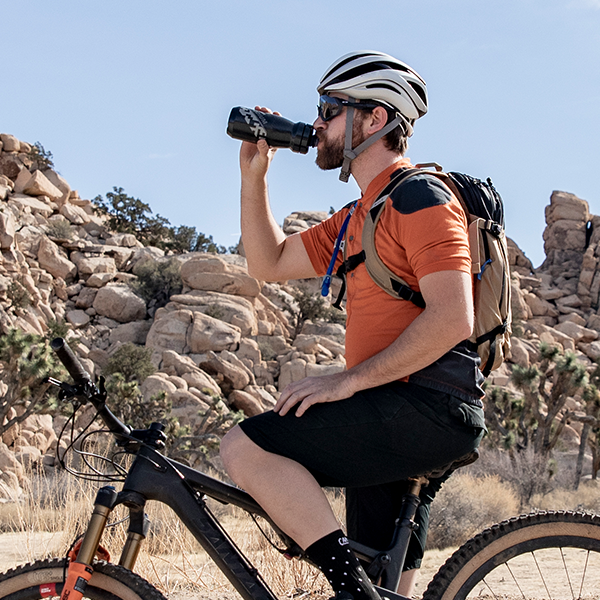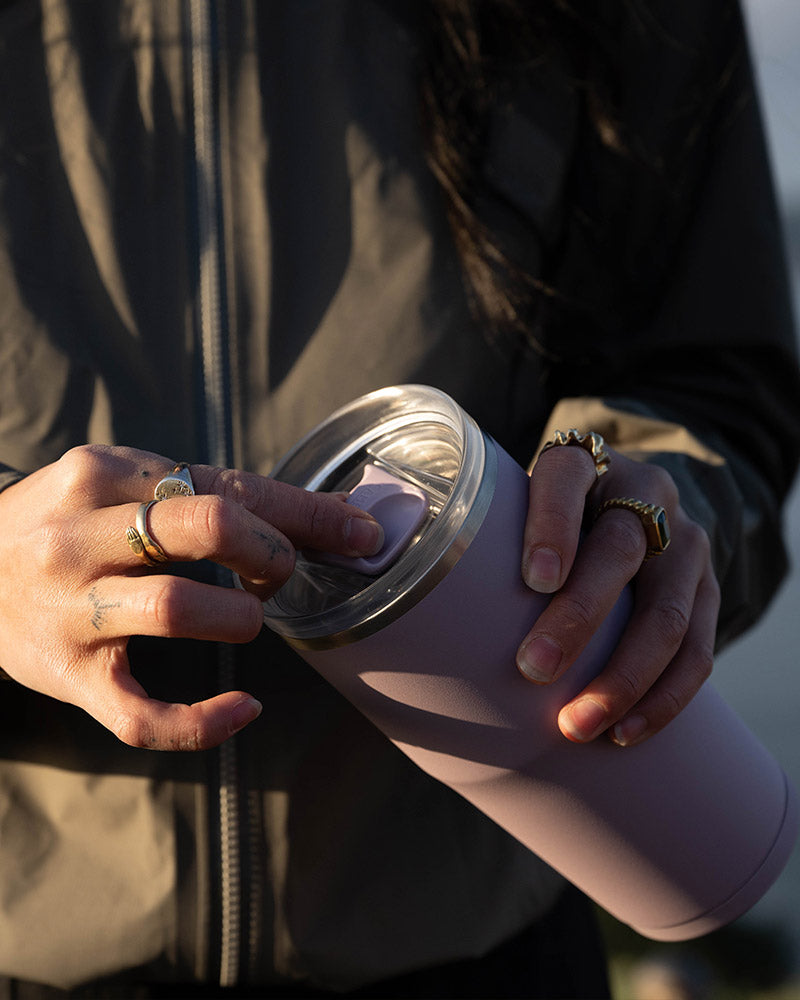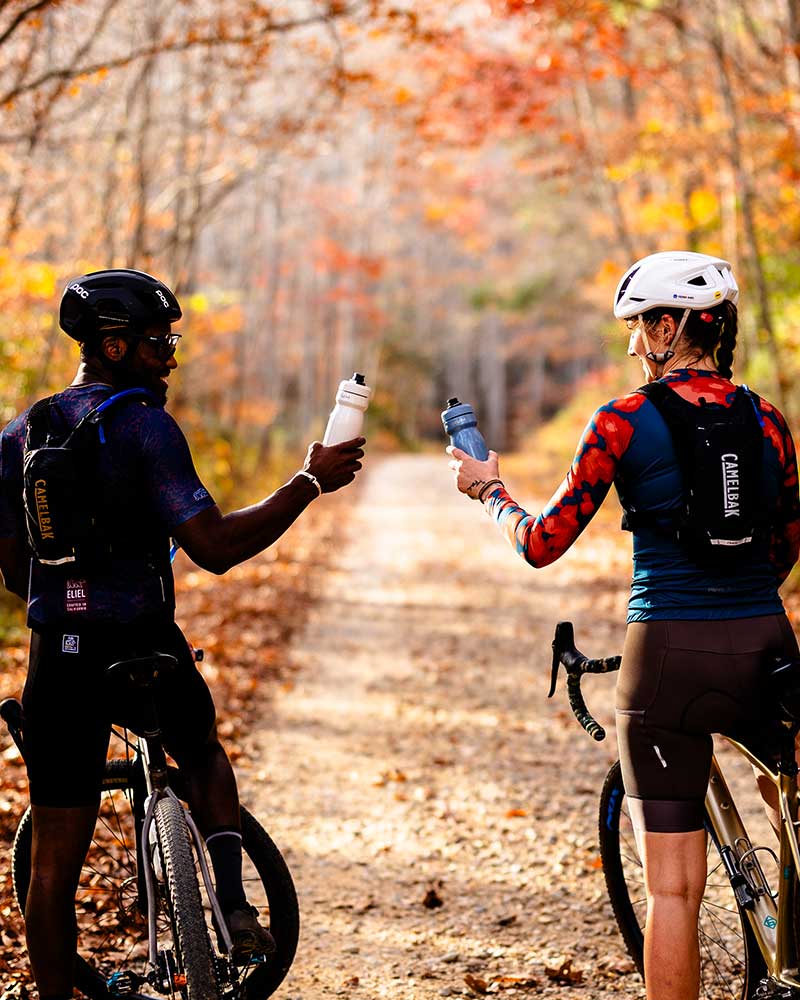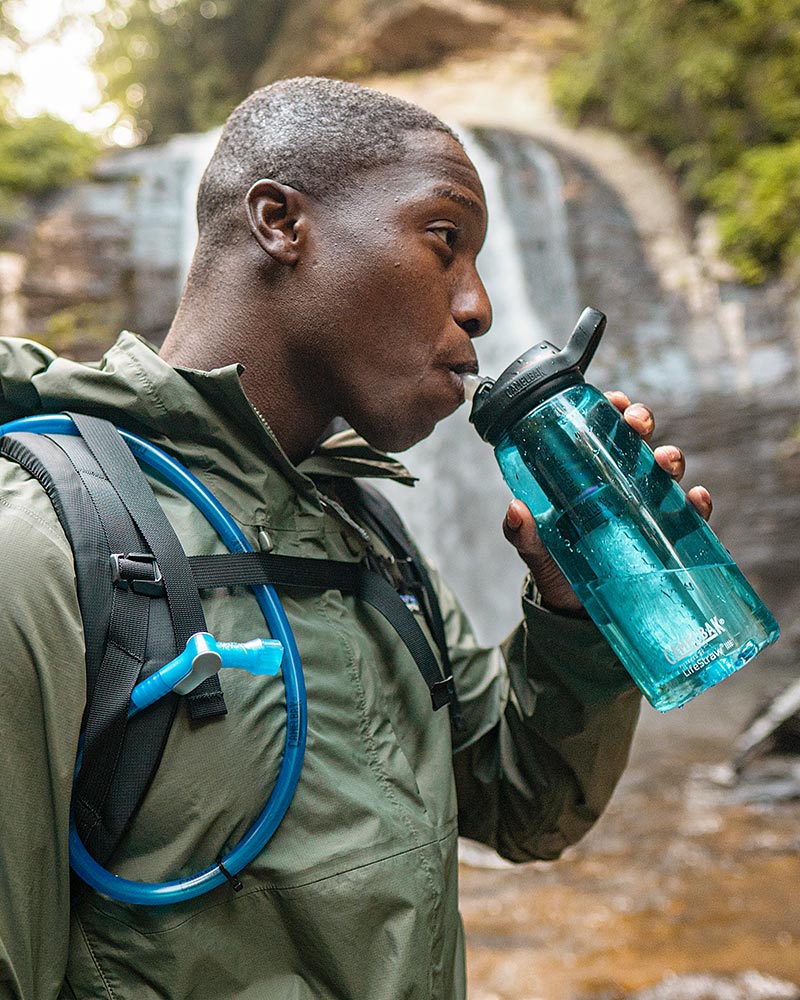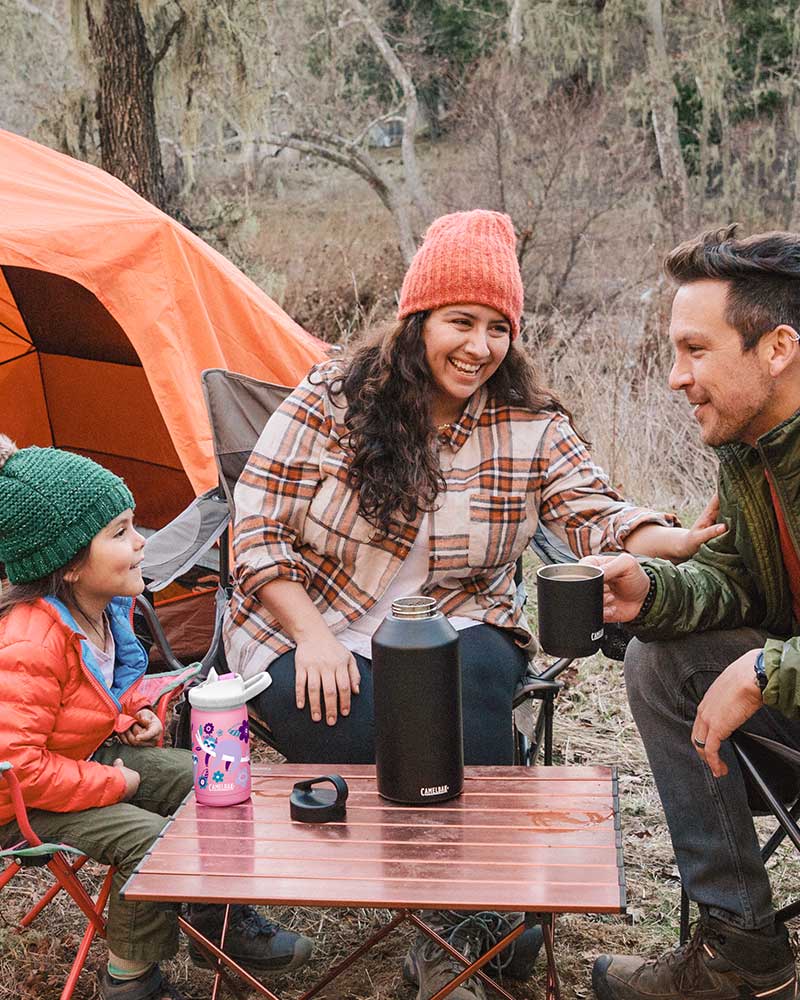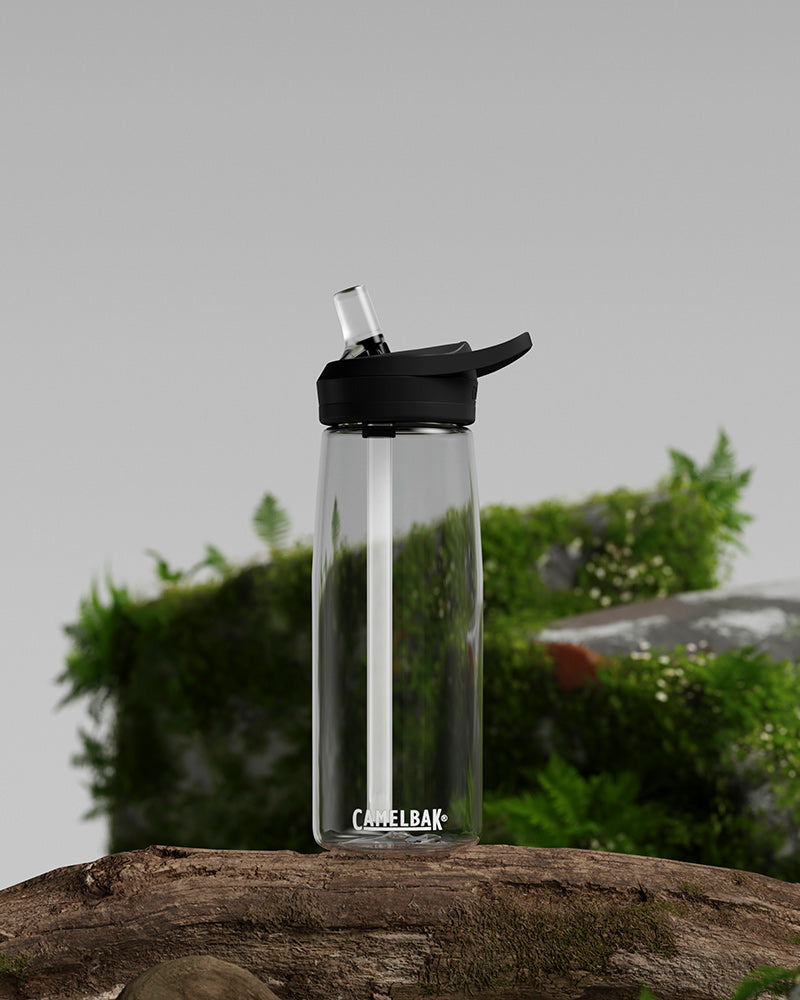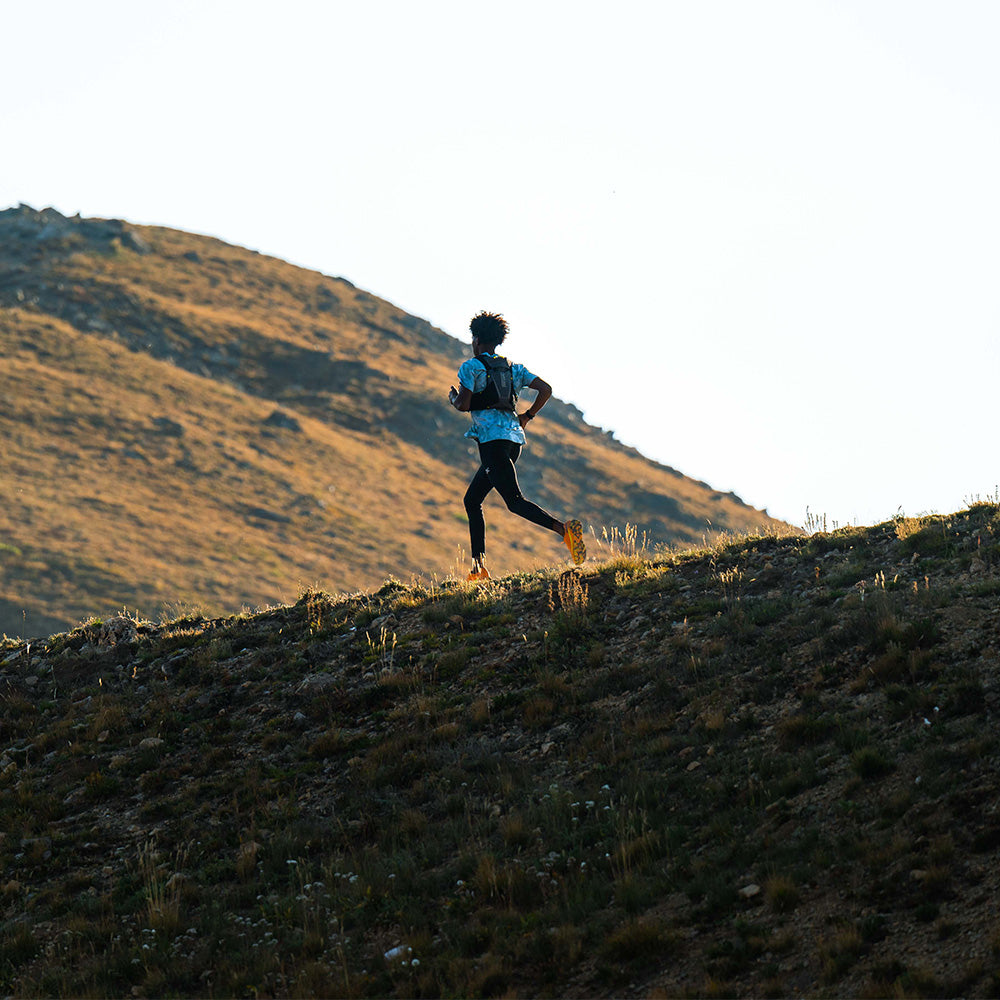HOW DO I WASH MY CAMELBAK RESERVOIR BEFORE FIRST USE?
Follow these steps or watch the video below:
1. Fill reservoir 1/2 full with warm water and mild soap or even better with our cleaning tablets.
2. Shake reservoir to mix water and soap.
3. Elevate the reservoir so drink tube exit port is at the base and Big Bite™ Valve is below the reservoir.
4. Pinch bite valve, allowing the cleaning tablet solution to flow into drink tube and through the bite valve. Ideally combine with brushing the inside of your reservoir as well as using Pure Flow™ tube brush for cleaning the inside of your tube with our Crux Cleaning Kit.
5. After washing, rinse away cleaning solution in the reservoir and drink tube.
6. Drain all remaining water. The reservoir is ready to use.
7. If storing, air dry reservoir with Reservoir Dryer™ accessory so no moisture is trapped inside.
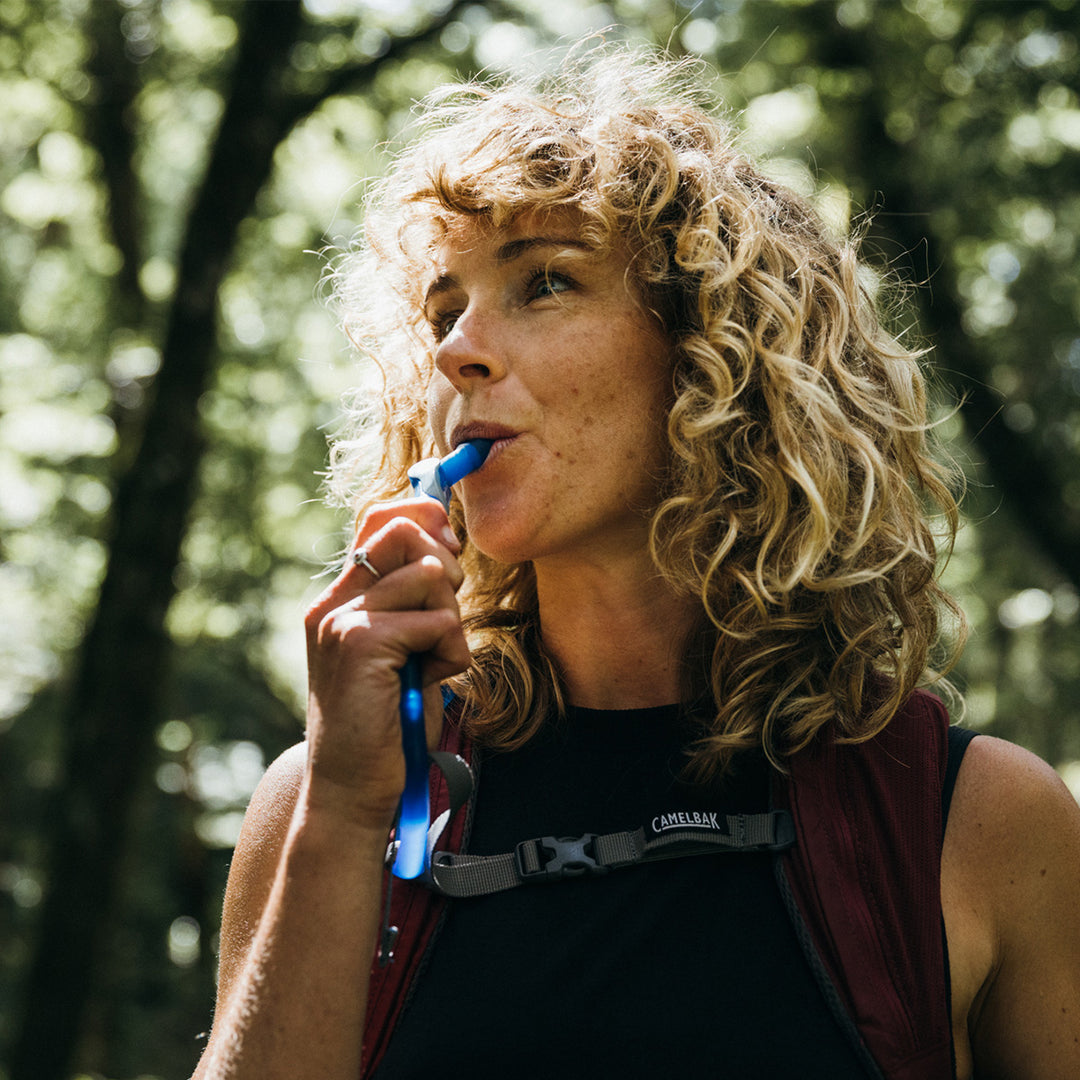
FREQUENTLY ASKED QUESTIONS: CAMELBAK RESERVOIRS
It’s important to deep clean your hydration pack once or twice a month, while remembering to rinse your reservoir tube and drying it after every use.
We offer a full selection of cleaning accessories for your reservoir. From eco-friendly cleaning tablets to a complete Cruz cleaning kit to make cleaning a breeze.
To remove the tube from the reservoir (or to take off the bite valve), soak the end of the reservoir with the tube connection in hot water for 5 to 10 minutes. This should soften the plastic and make it easier to pull the tube off. You can use the same trick to reattach the tube or bite valve: soak everything in warm water before pushing the parts back together. Once the plastic cools, it will firm up and seal itself more securely.
If you have an older reservoir (like an Omega or Antidote constructed with a standard exit port), you can install a Quick Link conversion kit to make it compatible with newer reservoir accessories like filters, flow meters, and insulated drinking tubes. Here’s how to attach the Quick Link components to your reservoir:
- Cut the drinking tube 5cm -7cm from the base of the reservoir
- Moisten the bottom threads of the Quick Link with rubbing alcohol and insert into the smaller tube with force. Do the same thing for the drink tub
- Unclick to fill and load reservoir, click into drink.
Nobody wants to get stuck in the backcountry with a leaky reservoir. Before you hit the trails, here’s how to make sure everything is in good shape:
- Pull the reservoir out of your pack and give it a quick visual inspection.
- Run some clean water through the reservoir and tube to rinse away any old tastes and odours. If your reservoir still looks or smells funky, give it a more thorough cleaning (you can find instructions here).
- Give the drinking tube a firm tug on either end to make sure it doesn’t come loose. If the tube comes off too easily, it might be stretched out—in that case, you can trim an inch off the end and then press the part back into the tube.
- Check the seal on the cap by filling the reservoir with water, screwing the cap on tightly, and rotating/squishing the reservoir to make sure nothing leaks
- If your cap is leaking, take a look at the O-ring (the black rubber ring on the inside of the cap lid) to make sure it isn’t twisted or broken.
- If your bite valve, drinking tube or Quick Link adapter isn’t working, you can buy a replacement part on our Reservoir Accessories page. For a broken cap or damaged O-ring, you’ll need to contact our Warranty Department for a replacement.
There are two likely culprits: grit in the cap threads, or a twisted O-ring.
- In certain conditions, particularly in sandy environments, fine grit can get into the threads of the cap, which will keep it from sealing completely when you screw it on. Check the threads for any dirt or grit, and give it a thorough scrub.
- Next, unscrew the cap and take a look at your O-ring. The O-ring is the black rubber ring inside the top of the cap—it looks just like a black rubber band. If the ring is twisted or pulled out of shape, your lid won’t seal correctly. You can usually pop the ring back into place, but if it’s permanently warped or broken, you’ll need to contact our Warranty Department for a replacement.
Our reservoirs are designed to be rugged and durable enough for almost every environment—but they’re not much use if the water inside them is frozen.
Here are a few more tips for keeping your water flowing in frigid temperatures:
- Fill your reservoir with warm (but not boiling) water, which will take longer to freeze.
- Drink frequently (a sip every five minutes or so) to keep your water circulating.
- Blow back into the drink tube after you take a sip. This will clear water from the narrowest parts of the reservoir (like the bite valve and tube), which are usually the first to freeze.
- Keep your water supply close to your body by wearing your pack under your jacket and routing your drink tube under your arm or through your pit zip. Our winter packs also feature insulated drinking tubes, and many of the smaller packs are designed to fit both under and over your jacket.
- On overnight trips, sleep with your water to keep it from freezing overnight. Just lock your bite valve closed and then stuff your reservoir into the bottom of your sleeping bag.
- While we work tirelessly to make our reservoirs as reliable as possible, we can’t change the laws of nature: in extremely cold temperatures, your water might freeze anyway. For that reason, it’s good to carry a backup bottle with a larger mouth opening, like the Chute.
HOW DO I CLEAN MY PODIUM WATER BOTTLE?
The Podium series bottles are all easy to clean by hand or in the dishwasher. Here’s how:
1. Remove the bottle cap and make sure the Jet Valve is open so water can circulate through as you wash it.
2. You can also pull off the silicone drinking nozzle to clean it separately—it will come off with a firm tug, and it’s easy to snap back on once you’re done.
3. Hand wash the cap and bottle with warm, soapy water.
You should avoid forcing brushes or cleaning tools through the slits in the drinking nozzle—you could end up with a damaged, leaky cap.
